Around a decade or two ago, Kia vehicles, or South Korean cars in general, suffered discrimination from Filipino car buyers – the same current state that Chinese cars are in right now and the same way that Japanese cars were treated unfairly half a century ago.
But as we all know by now, times have changed and are continuously changing, and Kia has already proven itself as a desirable car brand. The design and build quality have already improved by a ton, to the point that modern Kias can now stand side-by-side with its Japanese counterparts, sometimes even better.
Kia is now on its makeover’s second wave, and the Seltos is one of the first to bear the second-generation of its design philosophy. Is it any good? And more importantly, should you consider it despite the sea of choices in the market?
Exterior
Wide tiger grille, imposing stance, and all-LED affair – these things make the Seltos stand out in the sea of subcompact crossovers. As the platform twin of the Kona, the dimensions are close, but the Seltos has its own identity, veering away from the quirky appeal of its Hyundai cousin.


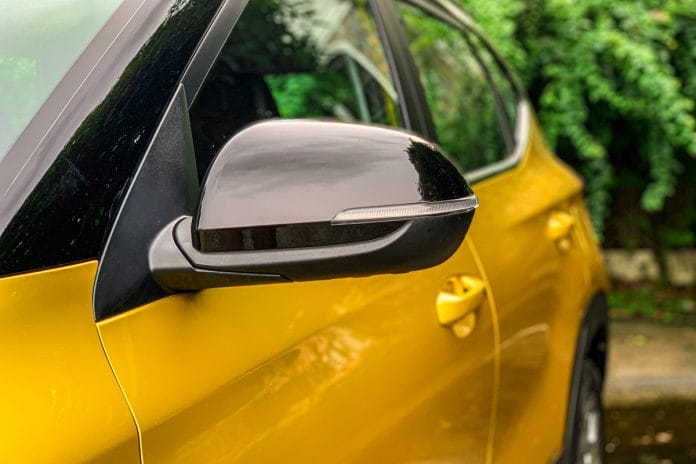
There isn’t anything with the Seltos’ styling that’s subtle. Both ends are busy and the swoopy roof rail is uniquely styled – even the Y-spoke wheels look stylish and snazzy. If not for the faux dual exhaust tips at the back, I would have given it a perfect score in terms of design. The two-tone Strabright Yellow color paint of the tester makes up for that fakery, though, so I’ll give those a pass.
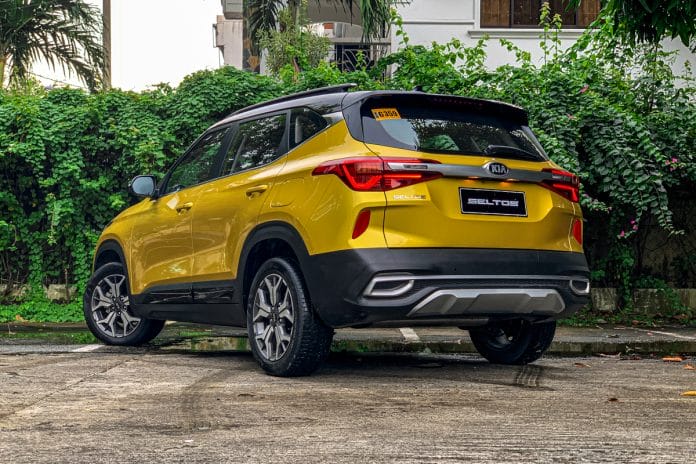
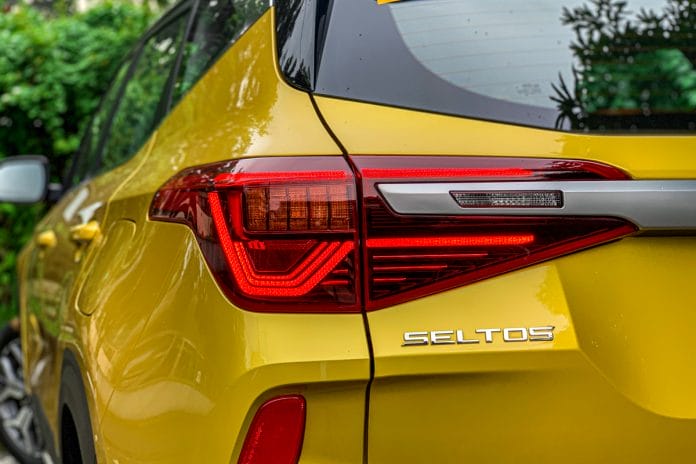
Interior
The Seltos’ cabin has the biggest improvements from its past. If you’ve been inside an old Pride, you’ll know what I mean. The styling isn’t going to win awards, but you know at one glance that the materials used are of great quality. The steering wheel is sized right and feels nice to the touch, while the leather seats with fabric inserts are comfy to be in. You’ll appreciate the fabric inserts of the Seltos when you’ve left it parked under the scorching sun as it doesn’t heat up as much as those full-on leather upholstery. Soft-touch plastics mostly populate the dashboard; you just need to be careful with the shiny piano black ones are they are prone to annoying fingerprints and scratches.
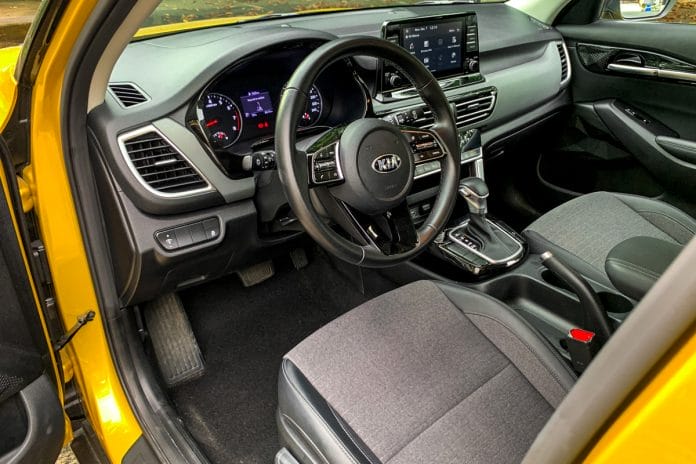


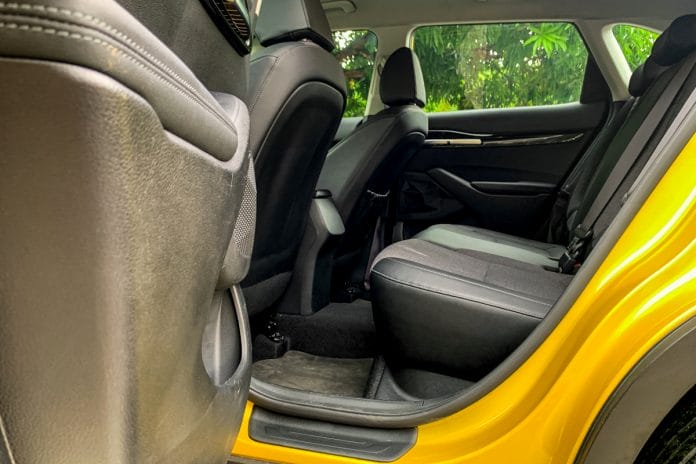
As for space, there’s plenty inside the Seltos for four average-sized individuals. Five is possible but as with most subcompacts, that’s going to be a squeeze. There isn’t a foldable armrest for the rear passengers, though, as well as A/C louvers. The 433-liter cargo area has a flat lip and offers sufficient space for normal family usage, but I can’t help but wish there’s a removable tonneau for added protection. The rear backrests fold completely flat to the floor, so that’s a plus.


Technology & safety
As modern as it gets – the Kia Seltos may not have the 360-degree-view cameras of its Chinese rivals, but it’s sufficiently equipped for daily and weekend use. Everything basic control is powered, while the 8-inch infotainment screen has a crisp display that’s perfect for Apple CarPlay and Android Auto smartphone integration. There are also cruise control and speed-sensing door locks, but my most favorite feature would be the remote-start function that worked like a charm every time I used it while testing.

Despite these nice tech features, I couldn’t help but look for electronic seat adjustments and USB charging ports at the rear. This is in consideration of the Seltos’ price tag, which, admittedly, is a bit pricey for its class. Then again, if the remote-start function makes up for that, it’s entirely up to you.
As for safety, the Seltos comes standard with six airbags, ABS with EBD, Stability Control, Downhill Brake Control, Hill Start Assist, and ISOFIX child seat tethers. The middle passenger at the rear will have to make do with a lap belt, though.
Driving & handling
In terms of driving dynamics, the Seltos is one of the dean’s listers in its class, but not the best. Handling is definitely the Seltos’ greatest trait. The motor-driven power steering is on-point and makes the crossover as nimble as a motorcycle. The steering feels light yet it has an awesome amount of ground feedback. Suspension, on the other hand, is tuned to be sporty yet still comfortable for the occupants.
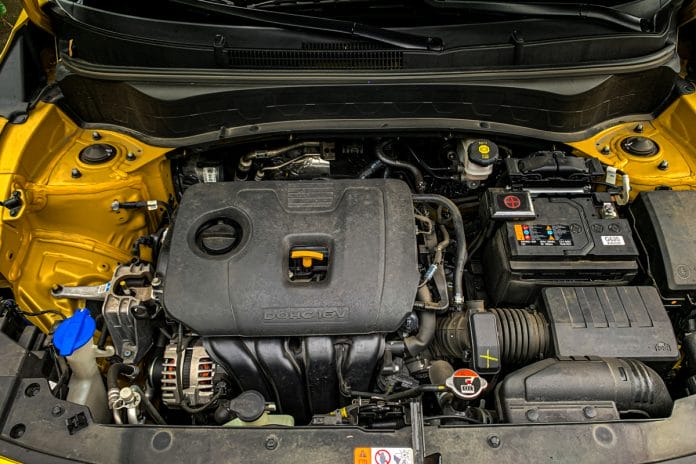
With those said, the Seltos is engaging to drive; it could have been the best out there if not for the limitations of its Intelligent Variable Transmission (IVT) – Kia’s newest version of CVT. While the 2.0-liter Atkinson cycle engine does provide more than enough power to the front wheels, the IVT puts a slightly noticeable delay when changing paces. But overall, the IVT is still better than most CVTs – I just couldn’t help but notice the missed opportunity of being the best.
Fuel efficiency
The IVT is still a CVT, so I expected great fuel economy from the Seltos – it didn’t disappoint. A quick sprint with the Seltos on Skyway at an average speed of 90 km/h returned an impressive 21.2 km/l, while in-city traverse amid light traffic registered around 14 km/l. Amid heavy traffic, I got 8.6 km/l. All of these numbers were taken with only two people aboard, minimal luggage, and while in Normal driving mode.
Verdict
Kia has already earned its rank in the local automotive market, and it’s not showing signs of slowing down with the Seltos. Shortcomings included, this good-looking crossover is a great blueprint for future Kia vehicles, proving us that despite having already improved from its past, these South Korean cars can still be better. The overall quality is something that’s hard to engineer, and I believe that Kia engineers have done a great job in the Seltos.

And then, there’s the rub. At P1,525,000, the Seltos is admittedly at the latter end of the subcompact crossover pricing spectrum, standing side-by-side with the Honda HR-V, Subaru XV, and Mazda CX-30. If you have the means to look beyond that relatively hefty price tag, the Seltos would be a solid choice.

